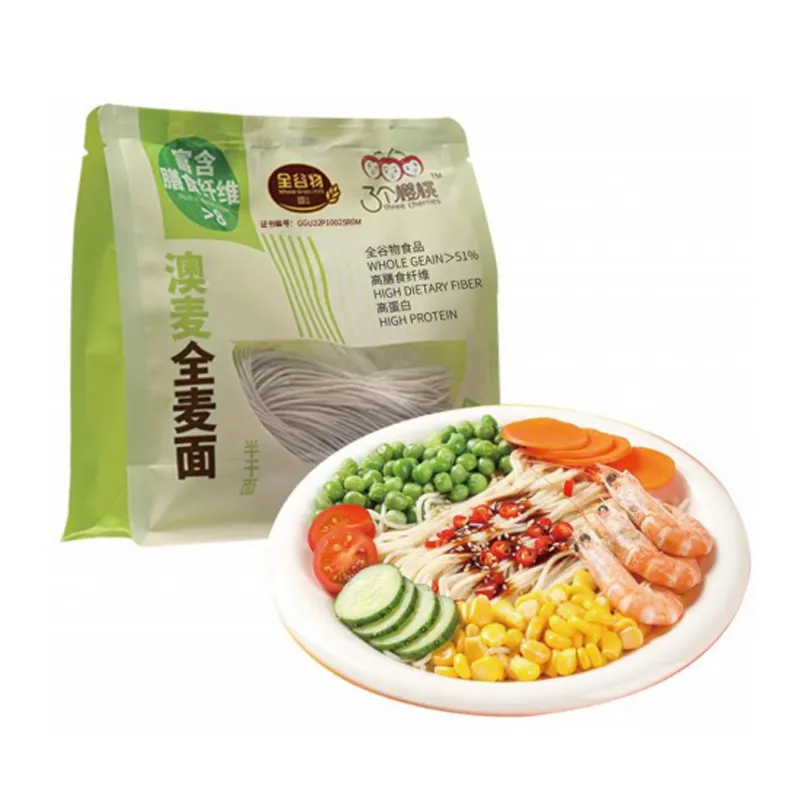cold noodles japanese
Exploring the Delight of Japanese Cold Noodles
Japanese cuisine is renowned for its diverse range of flavors, textures, and presentation styles. Among its many culinary delights, cold noodles stand out as a refreshing option, especially during the warmer months. This article delves into the world of Japanese cold noodles, exploring their forms, preparation methods, and cultural significance.
Types of Japanese Cold Noodles
There are several types of cold noodles in Japanese cuisine, each with its unique characteristics and traditional dishes
. The most popular types include1. Zaru Soba Made from buckwheat flour, soba noodles are celebrated for their nutty flavor and chewy texture. Zaru soba is typically served chilled on a bamboo mat, accompanied by a dipping sauce called tsuyu, made from soy sauce, mirin, and dashi. The simplicity of zaru soba makes it a favorite during hot summer days.
2. Hiyashi Chūka This cold noodle dish is a colorful assortment of chilled ramen topped with a variety of fresh ingredients, such as sliced cucumber, carrots, egg, and meat. It often features a vinegary dressing, providing a refreshing tang. Hiyashi chūka combines the texture of chewy ramen with the crunchiness of vegetables, making it a visually appealing and appetizing summer dish.
3. Cold Udon Udon noodles are thick and chewy, often served in a similar manner to soba. Cold udon can be enjoyed with a variety of dipping sauces, including sesame or soy sauce-based options. It's also common to see tempura or tempura vegetables served alongside the noodles.
4. Sōmen These extremely thin wheat noodles are traditionally served chilled with a simple dipping sauce. Sōmen is often enjoyed during the hot summer months because of its lightness and ease of preparation. Some people add wasabi or chopped green onions to enhance the flavor of the dipping sauce.
cold noodles japanese

Preparation and Serving
The preparation of cold noodles in Japan is often as important as the ingredients themselves. The process generally involves cooking the noodles, immediately draining them under cold water, and then chilling them further in ice water. This method helps achieve the perfect texture—al dente yet refreshing.
Once prepared, cold noodles are artfully plated. In many cases, they are served on special dishes that enhance their beauty, such as a zaru (bamboo mat) or a plate with seasonal garnishes. The presentation often incorporates elements of nature, reflecting the Japanese culinary philosophy of shun, which emphasizes the use of fresh, seasonal ingredients.
Cultural Significance
Cold noodles hold a special place in Japanese culture, particularly in summertime. They not only provide a delicious way to cool off during the heat but also symbolize a sense of community and celebration. Many families enjoy making cold noodle dishes together, and they are often featured at festivals and special events.
One notable Japanese tradition is sōmen nagashi, where thin noodles are served in a flowing stream of water. Diners catch the noodles with chopsticks as they float by, combining the enjoyment of food with a fun and interactive dining experience. This tradition embodies the spirit of summer celebrations and the appreciation for nature.
Conclusion
Japanese cold noodles are more than just a meal; they are a celebration of craftsmanship, culture, and seasonal freshness. Whether indulging in zaru soba on a hot day, savoring the vibrant flavors of hiyashi chūka, or enjoying the simplicity of sōmen, these dishes offer a delightful way to experience Japanese cuisine. The ritual of preparing and consuming cold noodles connects generations and fosters a love for this refreshing culinary tradition. In a world where food often moves too quickly, these chilled delicacies encourage us to slow down, savor each bite, and appreciate the flavors of both food and the season.
-
Unleash Your Inner Chef with Delectable Italian Pasta CreationsNewsAug.01,2025
-
Savor Health and Flavor: Irresistible Soba Noodles for Sale Await!NewsAug.01,2025
-
Nourish Your Body with Premium Organic Ramen - A Culinary Delight AwaitsNewsAug.01,2025
-
Elevate Your Dishes with Our Exquisite Kinds of Egg NoodlesNewsAug.01,2025
-
Dive into Flavorful Convenience with Our Ramen OfferingsNewsAug.01,2025
-
Discover Exquisite Types of Naengmyeon and Chilled Soba NoodlesNewsAug.01,2025
-
Is Whole Wheat Pasta Healthy?NewsMay.30,2025
Browse qua the following product new the we

















































































































